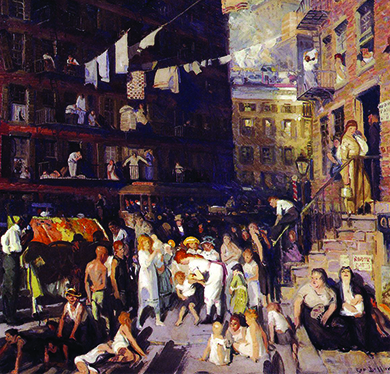| << Chapter < Page | Chapter >> Page > |
Other thinkers of the day took Charles Darwin’s theories in a more nuanced direction, focusing on different theories of realism that sought to understand the truth underlying the changes in the United States. These thinkers believed that ideas and social constructs must be proven to work before they could be accepted. Philosopher William James was one of the key proponents of the closely related concept of pragmatism , which held that Americans needed to experiment with different ideas and perspectives to find the truth about American society, rather than assuming that there was truth in old, previously accepted models. Only by tying ideas, thoughts, and statements to actual objects and occurrences could one begin to identify a coherent truth, according to James. His work strongly influenced the subsequent avant-garde and modernist movements in literature and art, especially in understanding the role of the observer, artist, or writer in shaping the society they attempted to observe. John Dewey built on the idea of pragmatism to create a theory of instrumentalism , which advocated the use of education in the search for truth. Dewey believed that education, specifically observation and change through the scientific method, was the best tool by which to reform and improve American society as it continued to grow ever more complex. To that end, Dewey strongly encouraged educational reforms designed to create an informed American citizenry that could then form the basis for other, much-needed progressive reforms in society.
In addition to the new medium of photography, popularized by Riis, novelists and other artists also embraced realism in their work. They sought to portray vignettes from real life in their stories, partly in response to the more sentimental works of their predecessors. Visual artists such as George Bellows, Edward Hopper, and Robert Henri, among others, formed the Ashcan School of Art, which was interested primarily in depicting the urban lifestyle that was quickly gripping the United States at the turn of the century. Their works typically focused on working-class city life, including the slums and tenement houses, as well as working-class forms of leisure and entertainment ( [link] ).

Novelists and journalists also popularized realism in literary works. Authors such as Stephen Crane, who wrote stark stories about life in the slums or during the Civil War, and Rebecca Harding Davis, who in 1861 published Life in the Iron Mills , embodied this popular style. Mark Twain also sought realism in his books, whether it was the reality of the pioneer spirit, seen in The Adventures of Huckleberry Finn , published in 1884, or the issue of corruption in The Gilded Age , co-authored with Charles Dudley Warner in 1873. The narratives and visual arts of these realists could nonetheless be highly stylized, crafted, and even fabricated, since their goal was the effective portrayal of social realities they thought required reform. Some authors, such as Jack London, who wrote Call of the Wild , embraced a school of thought called naturalism , which concluded that the laws of nature and the natural world were the only truly relevant laws governing humanity ( [link] ).

Notification Switch
Would you like to follow the 'U.s. history' conversation and receive update notifications?